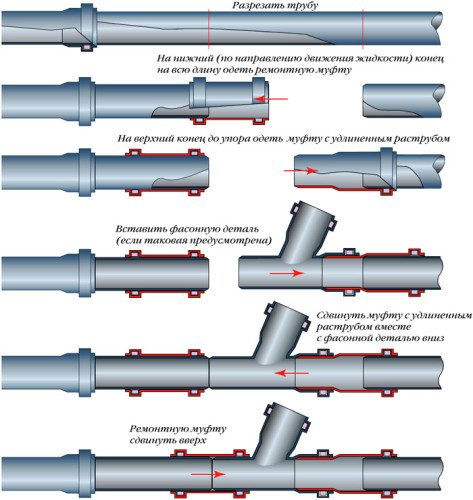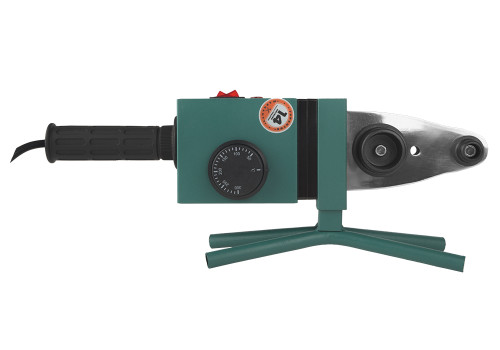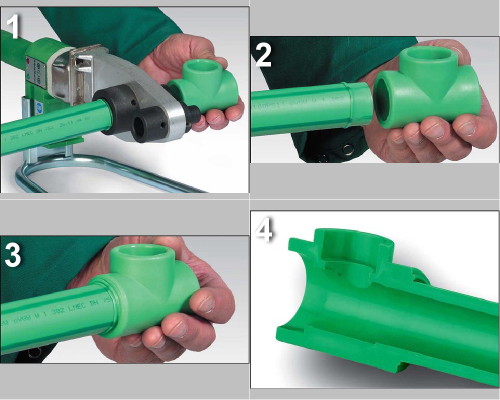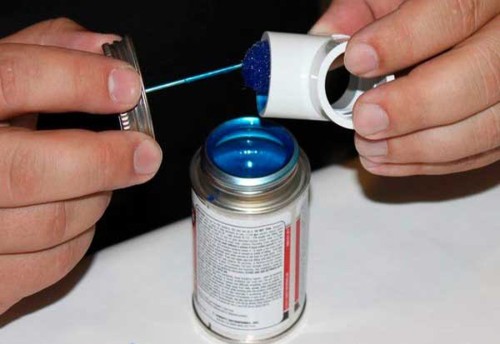Almost all modern communication systems are made from polymers. Some of them are polypropylene pipes that have become particularly popular when creating a home water pipeline. On the peculiarities of the welding of PVC pipes and will be discussed in our article.
Content
Product specifications
Pipes made from polyvinyl chloride have a smooth surface. Due to this, the plumbing from such pipes will never break.
The benefits of using PVC pipes are:
- resistance to the negative impact of the chemical environment;
- inconsistency of corrosion and rotting;
- low weight;
- ease of installation work;
- long operating period (up to 50 years);
- acceptable value.
From the equipment for welding PVC pipes will be needed:
- soldering iron with nozzles (selected depending on the diameter of the pipes);
- scissors for cutting pipes - pipe cutters (must be sufficiently sharp so that when cutting the pipes there are no burrs or other damage);
- fatheck.
Welding methods of pipes
There are two main technologies soldering water pipes:
- using the soldering iron (the most common method);
- with the help of special glue (the so-called cold welding).
Both types of welding PVC are suitable for communication systems that do not assume the presence of high pressure at the water run.
If the water is used as a coolant for the heating system, then work on the pipeline soldering can be carried out:
- coupling welding (with welding fittings, couplings or other connecting elements);
- electrical welding (as a result of melting connecting parts, a reliable spike with pipes occurs);
- butt welding (when used too thick pipes, which are heated to 220-260 ° C and are connected to each other).
All of these three technologies are reduced to the fact that obtaining a reliable clutch of pipes occurs when they are exposed to a large temperature.
Preparatory stage
Regardless of the technology of welding work, it is necessary to properly prepare for this process. At the initial stage:
- a detailed plan is drawn up indicating the location of water pipes;
- the amount of material (pipes, fittings, other fastening elements) is calculated.
Due to the diverse assortment of fittings, the system of pipelines can acquire any configuration.
Directly when buying should not pay attention to too cheap pipes (in most cases it is Chinese-made products). This is explained by the fact that at the first check, it is difficult to detect a defect that can manifest itself in the process of soldering the material.
Therefore, it is better to give preference to products of well-known pipe manufacturers, which include products:
- Nanninger;
- Wefatherm;
- Aquatherm;
- FV-Plast;
- Ecoplastics.
The same applies to the equipment for PVC welding. Before purchasing, you should make sure that it will be effectively functioning at an optimal temperature of 250-260ºС. It is clear that because of the high cost of buying a soldering iron REMS IGS-63FM SET 256231 does not make sense. The following devices will be suitable for the price category and quality:
- Gerat Weld 75-110 69110;
- BRIMA TG-171 0010291.
There is a conditional calculation of the appropriate power of the apparatus for welding PVC pipes, which is compared with the diameter of the pipes used. The minimum power capacity should be equal to the pipe diameter multiplied by 10. That is, if pipes with a diameter of 50 mm are used, the soldering iron must have a power of 500 W.
Welding work
Immediately before welding you need:
- clean pipes from dirt and dust in soldering places and degrease alcohol;
- make stamps on the pipes that will be connected by fittings (in places with turns and branching);
- rent from the ends of the pipe chamfer.
The process of soldering pipes from polyvinyl chloride consists of four main stages:
- cutting material;
- its heating to the optimum temperature;
- pipe connections;
- cooling material.
Cutting pipes is carried out by pipe cutter. It should be noted that the spike of pipes with fittings should not be too tight. When they are connected, a stock is created equal to two-time output depth of the pipe in the fitting.
When connecting pipes, it is not necessary to use excess effort. They can cause rings between the inside of the fitting and the end part of the pipe. Due to the appearance of such rings, the strength of water will decrease.
In the implementation of PVC welding with their own hands, special attention should be paid to the heating of the elements to the optimum temperature (250-260 ºС). If this is not done, then the junctions will work with defects. With normal heating at the spike points, there is an internal voltage of pipes, which is necessary for a qualitative process. Welding should be carried out fast enough. After that, the connection cools over 15-20 minutes.
PVC welding is carried out at temperatures above -3ºС. With too low temperatures you will have to heat the pipes for quite a long time. Yes, and the strength of the pipe connection will be not high-quality enough.
The room where the laying of pipes is carried out, must be clean. The presence of dust or dirt in the spike will lead to a significant loss of welding quality.
Features of cold welding
Cold welding PVC involves the use of special glue, which includes chlorinated polyvinyl chloride. The working structure must have a homogeneous consistency and be fluent. Under the influence of adhesive components, dissolution of 1/3 of the inner thickness of pipes and fittings occurs.
Work is carried out on warm days. If it is hot weather, the gluing process should be carried out in a short time. The glue should not dry until the end of the mounting work. When interrupted in the operation, the container with glue is tightly closed with a lid. Only the volatile components of the composition will not evaporate.
Cold welding of pipes from polyvinyl chloride involves the execution of such consistent actions:
- cut pipe required length;
- from the ends of the pipe at an angle of 15º, the chamfer is removed (without the appearance of burrs);
- pipe and fitting foting are cleaned from moisture, dust and dirt (the purifier for PVC pipes is best);
- a glue is applied to the surface of fitting and pipe;
- the pipe is inserted into the socket;
- the fitting is rotated by 90º (for uniform glue distribution);
- the connected parts are fixed and held in one position for 1-2 minutes;
- the uniformity of glue is checked in a pipe circle;
- excess composition is removed with a soft cloth.
Video about welding PVC pipes:
























